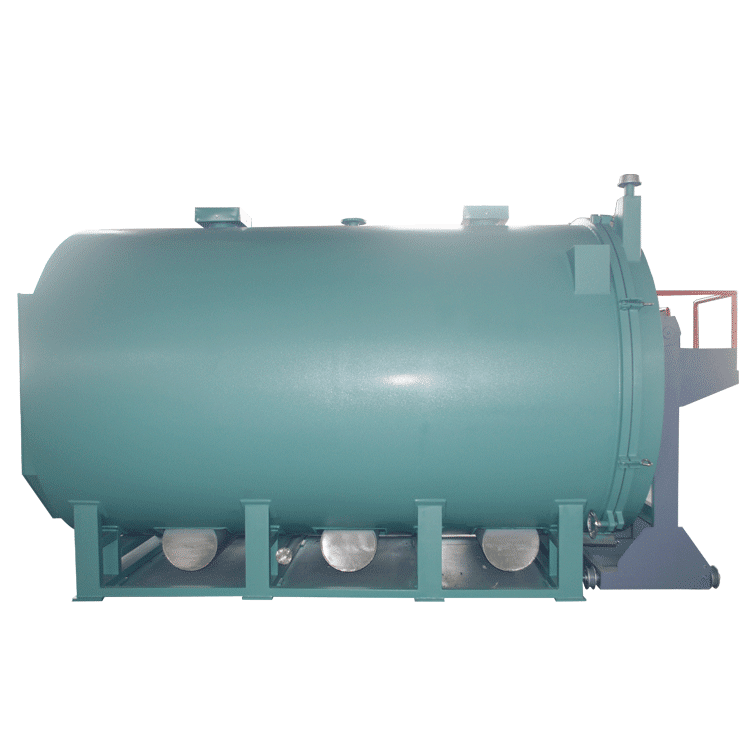Introduction to Vacuum Cleaning Furnaces Vacuum cleaning ovens are specialised equipment for cleaning and drying items under controlled vacuum conditions and are ideally suited for handling delicate or sensitive materials. These ovens are commonly used in laboratories, electronic equipment, and manufacturing where precision and avoidance of contamination are critical.

Operation of vacuum cleaning ovens The following basic steps are required to operate a vacuum cleaning oven:
Power supply and setup: First, make sure the furnace is connected to a grounded outlet and has the necessary fuses installed. Switch on the unit by using the main power switch (usually located on the front panel).
Vacuum settings: Connect the vacuum hose to the appropriate connection, usually a 3/8" hose connection. Close the vent valve completely, then open the vacuum valve to evacuate the furnace chamber. Monitor the vacuum gauge, usually in inches of mercury (inHg) or centimetres of mercury (cmHg). Once the desired vacuum level is reached, close the vacuum valve and shut off the vacuum pump.
temperature control: Set the desired temperature using the digital temperature control system. Most models have an adjustable temperature set point that the user can adjust with the up and down buttons. Some furnaces are also equipped with an over-temperature safety feature that will automatically activate when the set temperature limit is exceeded.
Monitor the furnace.: Observe the process through the transparent door during heating. A standard thermometer inside the furnace can be used to check the temperature displayed by the furnace to ensure accuracy.
Maintenance of vacuum cleaning ovens Regular maintenance is essential to ensure a long life and proper functioning of your furnace.
Regular cleaning: Clean the interior of the furnace regularly to prevent the build-up of residues that could interfere with the vacuum process. Most furnaces are equipped with removable shelves for easy cleaning.
Vacuum system check: Ensure that vacuum hoses and connections are secure and free of air leaks. Regularly inspect the vacuum pump and replace any worn parts, such as seals or valves, to maintain optimum performance.
calibrations: Over time, the temperature control system may need to be calibrated to ensure accurate readings. Calibration can usually be done using a certified reference thermometer placed in the furnace chamber. If a discrepancy is found, recalibrate the furnace according to the manufacturer's guidelines.
Door seal inspection: Silicone door seals ensure vacuum tightness. Regularly check the seal for wear and lubricate as necessary to maintain the seal.
Troubleshooting FAQs Troubleshooting common problems with vacuum cleaning ovens involves checking several key components:
vacuum leak: If the furnace fails to achieve or maintain vacuum, check for air leaks in the vacuum hose and valve connections. Damaged hoses or malfunctioning valves can cause a pressure drop.
temperature inconsistency: If the furnace does not maintain the set temperature, it may be due to a faulty thermostat, heating element, or improper calibration. Check the thermostat and make sure it is properly calibrated.
Power or electrical problems: If furnace will not start or operates erratically, check fuses and power supply. Replace blown fuses and make sure the power supply is stable.
Overheating or overtemperature protection: If the furnace's over-temperature light comes on, the thermostat or sensor may be faulty. Make sure the over-temperature protection system is working properly.
reach a verdict Maintaining and operating a vacuum cleaning furnace requires careful attention and regular inspections. By following the manufacturer's operating manual for setup, temperature control and vacuum maintenance, the user can extend the service life of the furnace and ensure that it operates at optimum conditions. Regular troubleshooting can help to resolve any operating problems in a timely manner.
This guide provides a general overview of vacuum cleaning oven operation and maintenance. For specific models, always refer to the detailed user manual provided by the manufacturer for comprehensive operating procedures and technical support.
🟢 Our company can non-standard custom products, click the menu bar to contact us to customise, you can also refer to the first!product pageAppreciate our company's products oh!
Recommended Reading:
